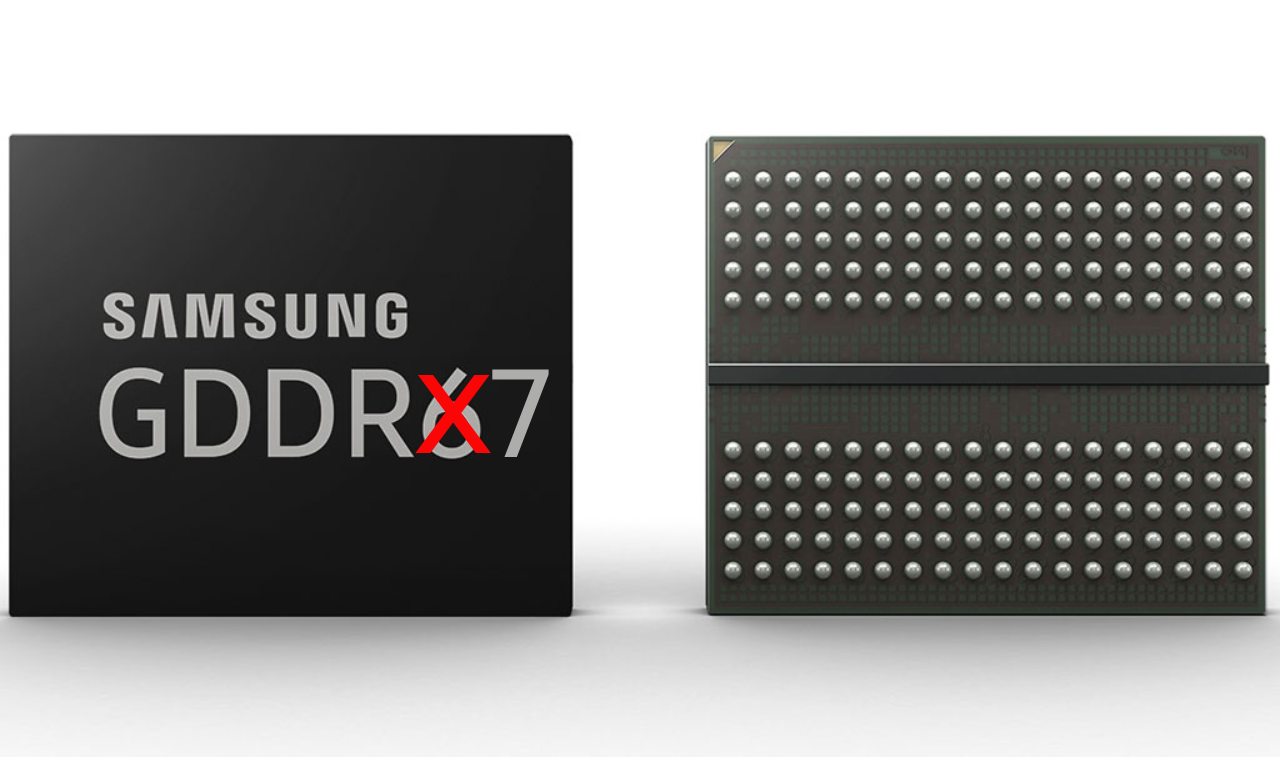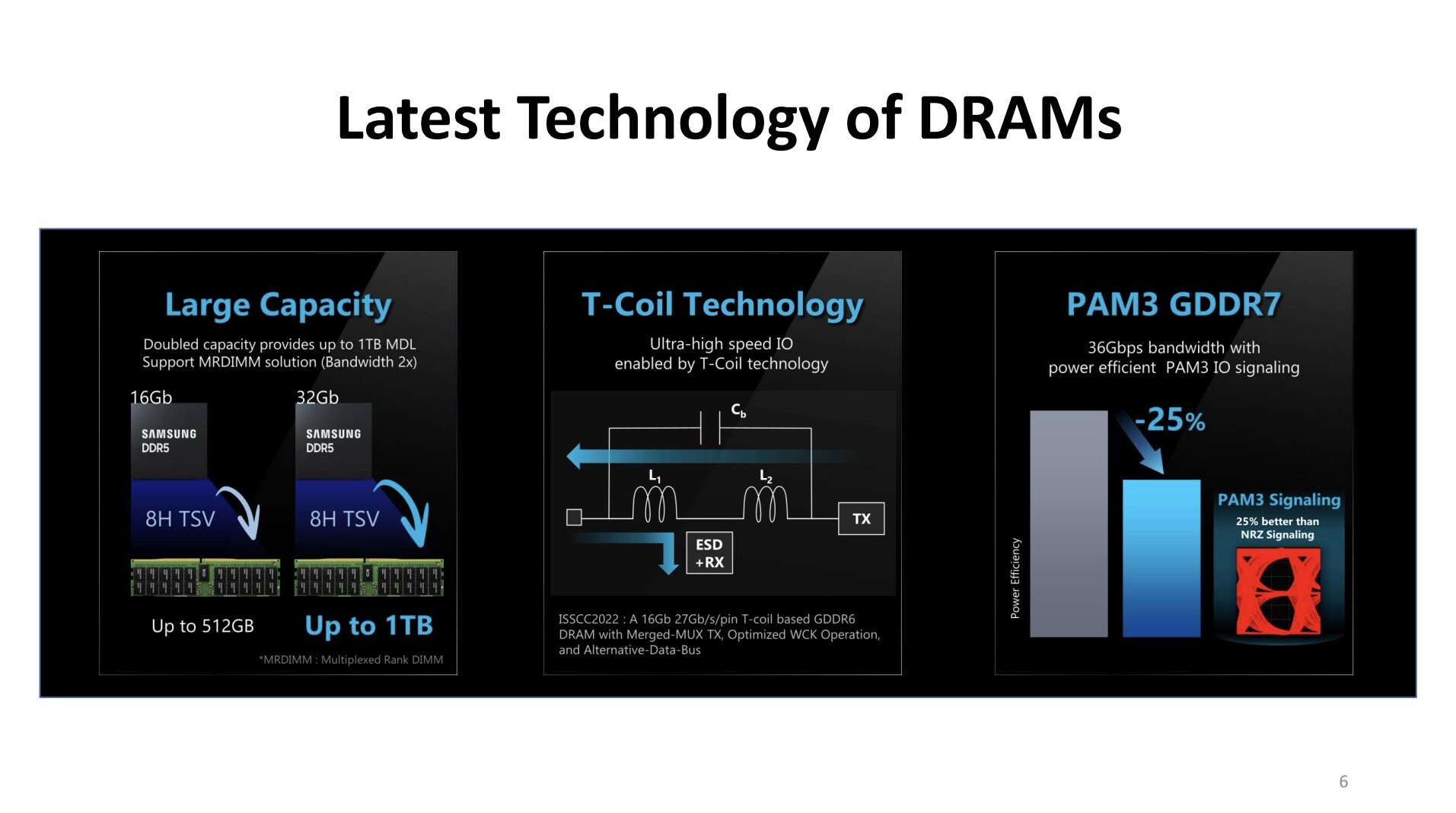Samsung's new GDDR7 graphics memory delivers 50% more bandwidth thanks to PAM
That's pulse-amplitude modulation, don't you know...

Samsung has detailed some of the technology that will allow its upcoming GDDR7 graphics memory to hit 36 Gbps at its annual tech day. That's a very healthy boost over the fastest current GDDR6 and GDDR6X memory.
That 36 Gbps figure is just the starting point, too. By comparison, GDDR6 kicked off at 14 Gbps. The key enabler for GDDR7's improved speed is revised use of PAM, or pulse-amplitude modulation, signalling to transfer data.
In simple terms, the zeroes and ones of binary computer data is transformed into electrical waveforms when being transmitted from, say, a graphics memory chip into a GPU. PAM-2 signalling, as implemented in GDDR6, allows one bit per transmission cycle, while GDDR6X used a version called PAM-4 which doubled that to two bits per cycle.
GDDR7 instead uses PAM-3 signalling with support for three bits per cycle, making it immediately 50% faster in terms of bandwidth at any given operating frequency. PAM-3 is also said to be more 25% more energy efficient, which is handy given the power hogs modern graphics cards are quickly becoming.
To put figures on the impact this will have on available bandwidth, the new Nvidia GeForce RTX 4080 with its 256-bit bus and 22.4 Gbps GDDR6X has 717GB/s of raw bandwidth. With GDDR7 running at 36 Gbps on that same 256-bit bus, you'd be looking at 1,152GB/s.
Or how about the RTX 4090 and its 21 Gbps GDDR6X running over a 384-bit bus? That adds up to 1,008GB/s of bandwidth. With GDDR7, the 4090 would rock 1,728GB/s. Nice.

As for when you can expect to see GDDR7 on a graphics card you can buy, it's unclear whether Nvidia's new RTX 40 series or AMD's RDNA 3 GPUs can support GDDR7 going forward. Earlier this year, there were rumours of RTX 40-series going with super-fast GDDR7 tech. But it and AMD's latest GPUs have stuck with GDDR6X and GDDR6 respectively as they finally hit the market.
The biggest gaming news, reviews and hardware deals
Keep up to date with the most important stories and the best deals, as picked by the PC Gamer team.
We also recently reported on Samsung's new GDDR6W which doubles memory density and speed per memory package, so where exactly either new graphics memory fits in with tomorrow's GPU ranges is still very much up in the air.
Best CPU for gaming: Top chips from Intel and AMD
Best gaming motherboard: The right boards
Best graphics card: Your perfect pixel-pusher awaits Best SSD for gaming: Get into the game first

Jeremy has been writing about technology and PCs since the 90nm Netburst era (Google it!) and enjoys nothing more than a serious dissertation on the finer points of monitor input lag and overshoot followed by a forensic examination of advanced lithography. Or maybe he just likes machines that go “ping!” He also has a thing for tennis and cars.


